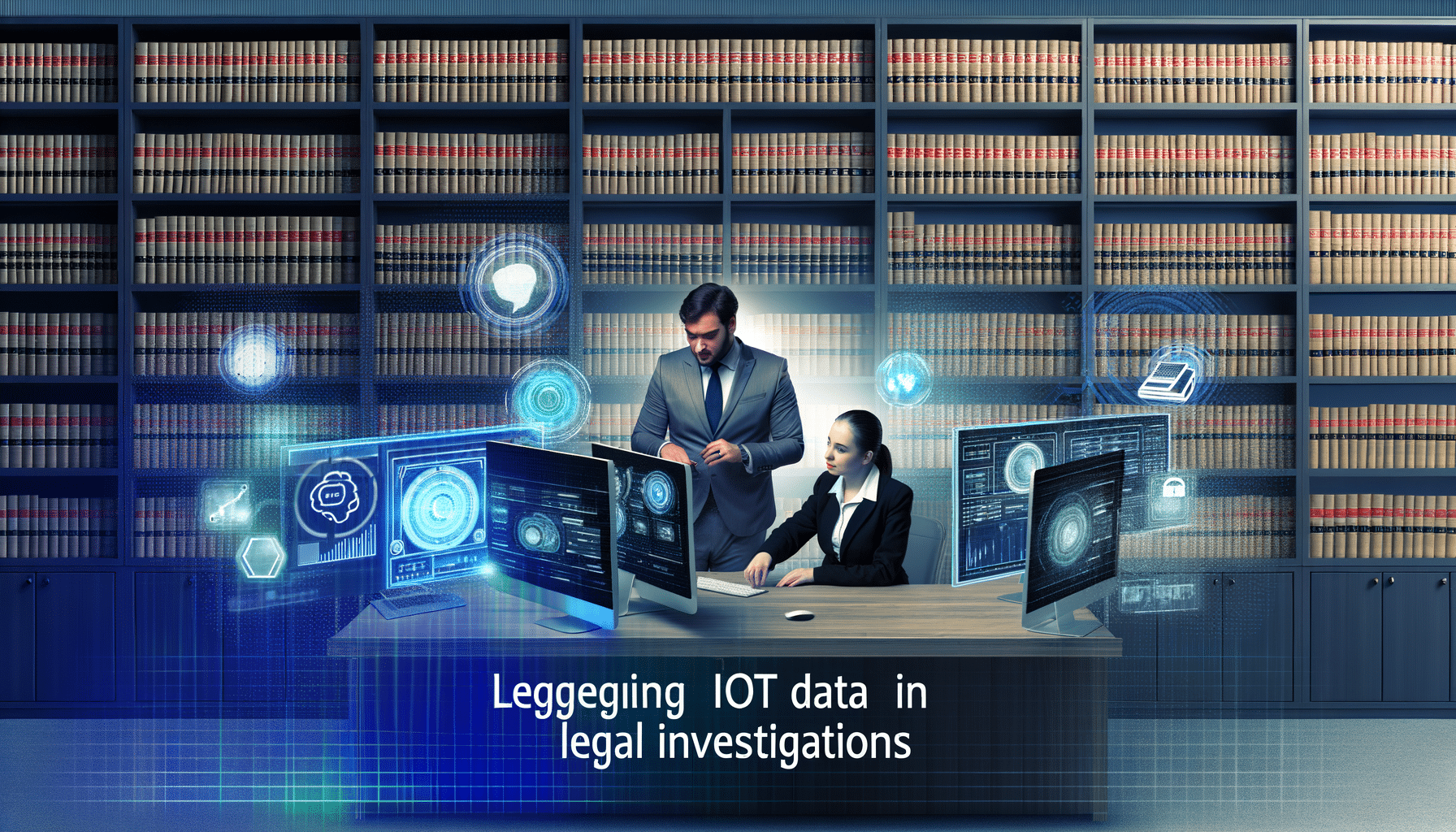- Evidence Innovations
- November 8, 2024
Leveraging IoT Data in Legal Investigations

Unlocking the Power of IoT Data in Legal Investigations
In today’s increasingly connected world, the surge of the Internet of Things (IoT) has opened up a treasure trove of data that could change the face of legal investigations as we know it. For legal, finance, and compliance heads, embracing this technology can be a game-changer in gathering and analyzing evidence with unmatched precision and efficiency. But what does leveraging IoT data really entail for those navigating the complexities of legal landscapes? Let’s delve deeper.
Understanding IoT Data in the Legal Context
IoT devices are everywhere—from smartwatches and connected cars to intelligent home devices and industrial sensors. Every device continuously generates massive streams of data, documenting patterns, behaviors, and specific events relevant to its user or environment. This transformation translates into a rich source of evidence that legal professionals can harness to resolve disputes or criminal cases.
Imagine this scenario: A smart home device logs entries and exits through a door, capturing timestamps that could be pivotal in a burglary investigation. Or consider a vehicle’s telematics system painting a vivid picture of a driver’s actions before an accident. It’s not just about availability; it’s about contextual relevance.
Navigating Data Integrity and Authentication
When dealing with IoT data, maintaining integrity and authenticity becomes paramount. Data must not only be securely handled but also authenticated to ensure it hasn’t been tampered with—a fundamental aspect for it to be considered admissible in court. Utilizing Blockchain technology can enhance this aspect, providing an immutable ledger that ensures file integrity and offers transparent timestamps.
Blockchain’s promise of tamper-proof data proves advantageous here, acting as a reliable witness to the data’s provenance. With verifiable traces, legal teams can corroborate claims and reinforce the credibility of their reenactments and arguments.
Automated Data Analysis: Finding the Needle in the Haystack
The sheer volume of IoT data presents a unique challenge—how to sift through it effectively to uncover pertinent information. This is where AI comes into play. Advanced AI algorithms can automatically categorize and filter through data, spotlighting key details and connections amidst the noise.
Key benefits of AI-driven analysis include:
- Rapid Data Processing: Conduct thorough evaluations in significantly less time, empowering faster resolution timelines.
- Pattern Recognition: Identify trends and patterns that might go unnoticed in manual reviews, unveiling new leads.
- Real-time Insights: Stay informed with continual updates to harness timely, actionable intelligence.
Enhanced Security Measures for Sensitive Evidence
Handling sensitive data, especially data captured through IoT devices, demands rigorous security standards. Proprietary information, identity details, and privacy considerations all play crucial roles in safeguarding an individual’s rights.
Employing secure data rooms provides the necessary protection, ensuring controlled access and maintaining intricate logs of every interaction. Every piece of evidence is tracked, monitored, and stored with utmost confidentiality, ready to be presented whenever needed.
The Compliance Angle: Staying Within Limits
Compliance with industry standards like GDPR, HIPAA, and SOX isn’t just good practice—it’s a legal obligation. When utilizing IoT data, it is crucial to enforce compliance-driven policies that respect data privacy and adhere to the relevant laws.
Automating regulatory workflows can simplify adhering to these standards, reducing the burden on manual reconciliation and minimizing the risk of non-compliance. Through informed policy management, legal teams can efficiently align their investigative strategies with statutory requirements.
Strategizing for Success: Future-Proofing Legal Investigations with IoT
IoT data is not a mere enhancement to traditional evidence-gathering methods; it’s a paradigm shift proving essential for modern legal investigations. However, to integrate it successfully, one must consider:
- Building Robust Data-Infrastructure: Establish comprehensive infrastructure to collect, store, and process diverse data sets scalably.
- Cross-Disciplinary Collaboration: Collaborate with technologists and data scientists to enhance evidence articulation and strategy formulation.
- Adapting to Evolving Standards: Continuously revise and refine techniques to align with evolving legal frameworks and technological advancements.
In conclusion, IoT data holds immense potential for revolutionizing legal investigations, empowering evidence gathering with precision, accuracy, and depth. As we move further into a data-driven future, comprehensively understanding and leveraging this technological advancement will become a strategic advantage. I encourage you to stay curious and proactive—view each IoT device not as a challenge but as an opportunity. Together, we can redefine legal paradigms and create a more transparent and efficient investigative landscape.
Thank you for joining me in exploring this realm. Feel free to follow my journey for more insights into the ever-evolving intersection of technology and law.
Toshendra Sharma is the visionary founder and CEO of RecordsKeeper.AI, spearheading the fusion of AI and blockchain to redefine enterprise record management. With a groundbreaking approach to solving complex business challenges, Toshendra combines deep expertise in blockchain and artificial intelligence with an acute understanding of enterprise compliance and security needs.
Archives
- January 2025
- December 2024
- November 2024
- October 2024
- September 2024
- August 2024
- July 2024
- June 2024
- May 2024
- April 2024
- March 2024
- February 2024
- January 2024
- December 2023
- November 2023
- October 2023
- September 2023
- August 2023
- July 2023
- June 2023
- May 2023
- April 2023
- March 2023
- February 2023
- January 2023
- December 2022
- November 2022
- October 2022
- September 2022
Want to get more content like this?
Signup to directly get this type of content to your inbox!!
Latest Post
Document Control for Equipment Maintenance
- January 20, 2025
Managing Records for Multiple Clients
- January 19, 2025
Handling Conference Documentation
- January 18, 2025
Setting Up Department Record Reviews
- January 17, 2025





